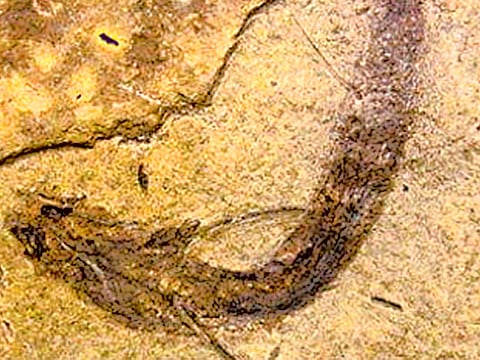In fossilised fish eye, rods and cones preserved for 300 million years
Discovery could inform the study of many vertebrates like dinosaurs, birds and other fossil fish

Los Angeles: Scientists have discovered a fossilised fish so well preserved that the rods and cones in its 300-million-year-old eyeballs are still visible under a scanning electron microscope.
It is the first time that fossilised photoreceptors from a vertebrate eye have ever been found, according to a paper published Tuesday in Nature Communications. The researchers say the discovery also suggests that fish have been seeing the world in colour for at least 300 million years.
Rods and cones are cells that line the retina in our eyes. Rods are long and thin, and more sensitive to light than cones. However, cones, which are triangular, allow us to see in colour.
Both these cells rely on pigments to absorb light. Using chemical analysis, the scientists found evidence of one of these pigments — melanin — in the fossilised eye as well.
The fish is about 10 centimetres long. It was found in the Hamilton Quarry in Kansas, which was once a shallow lagoon. Fossils from this area are remarkably well preserved because they were buried very quickly in sediments in the lagoon, said Gengo Tanaka of Kumamoto University in Japan, the lead author of the paper.
In the case of this fish, an extinct species called Acanthodes bridgei, the preservation process probably also got some help from bacterial activity that left a thin film of phosphate over the eyes before it was buried.
Tanaka said that gills and pigments on other parts of the fish were also preserved. However, he had not looked to see whether organs and nerves were intact as well.
The researchers compared the fossilised fish eye to the modern-day fish Rhinogobius, which is similar in size to A. bridgei and which also lives in slightly salty water. They found that the ratio of rods to cones was similar in both fish, which suggests A. bridgei was more active during the day and relied on its vision to make a living.
Tanaka said the discovery could inform the study of many vertebrates like dinosaurs, birds and other fossil fish. Scientists had thought that modern eyes had developed hundreds of millions of years ago. Now, they have definitive proof.
Sign up for the Daily Briefing
Get the latest news and updates straight to your inbox



